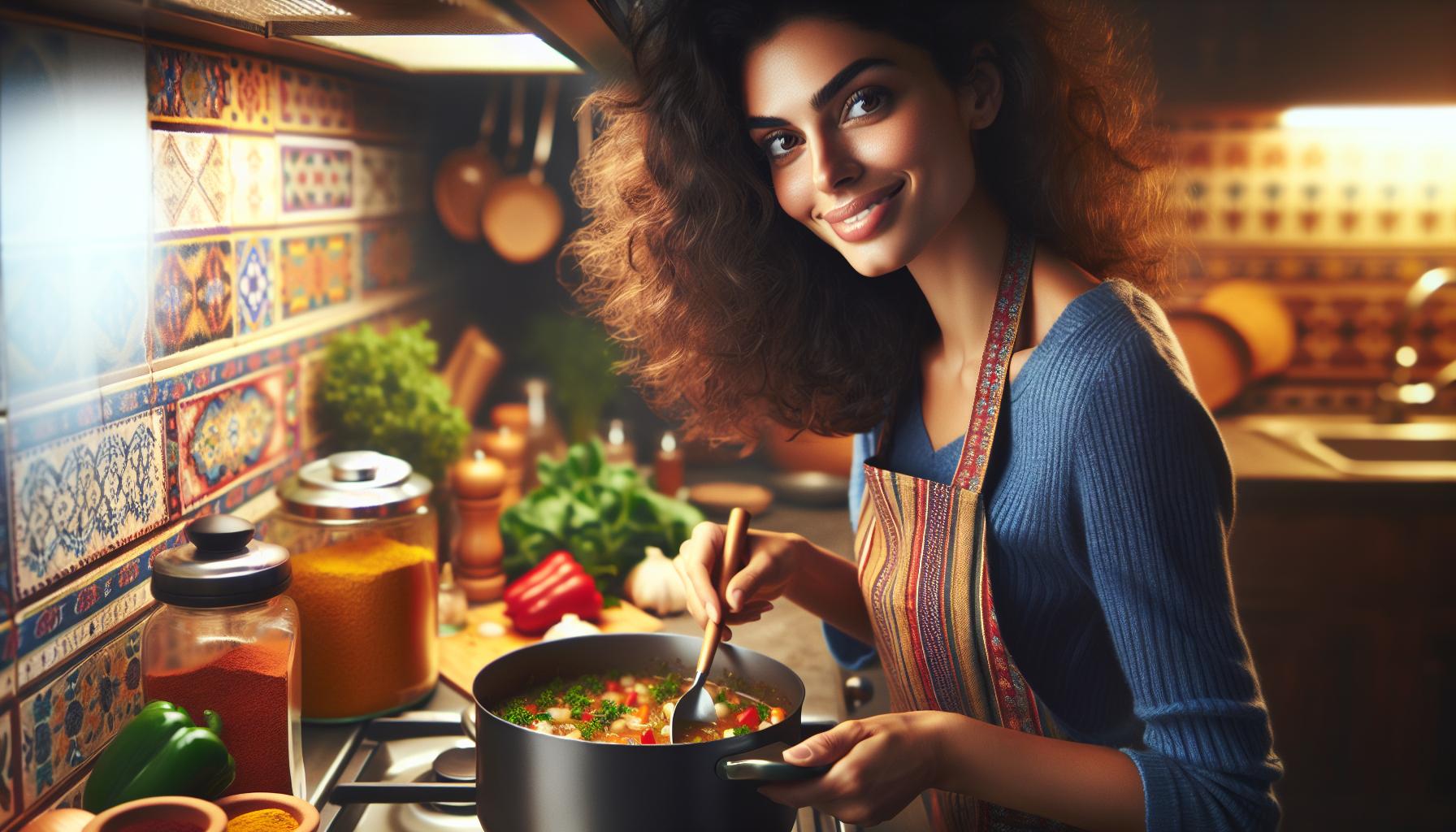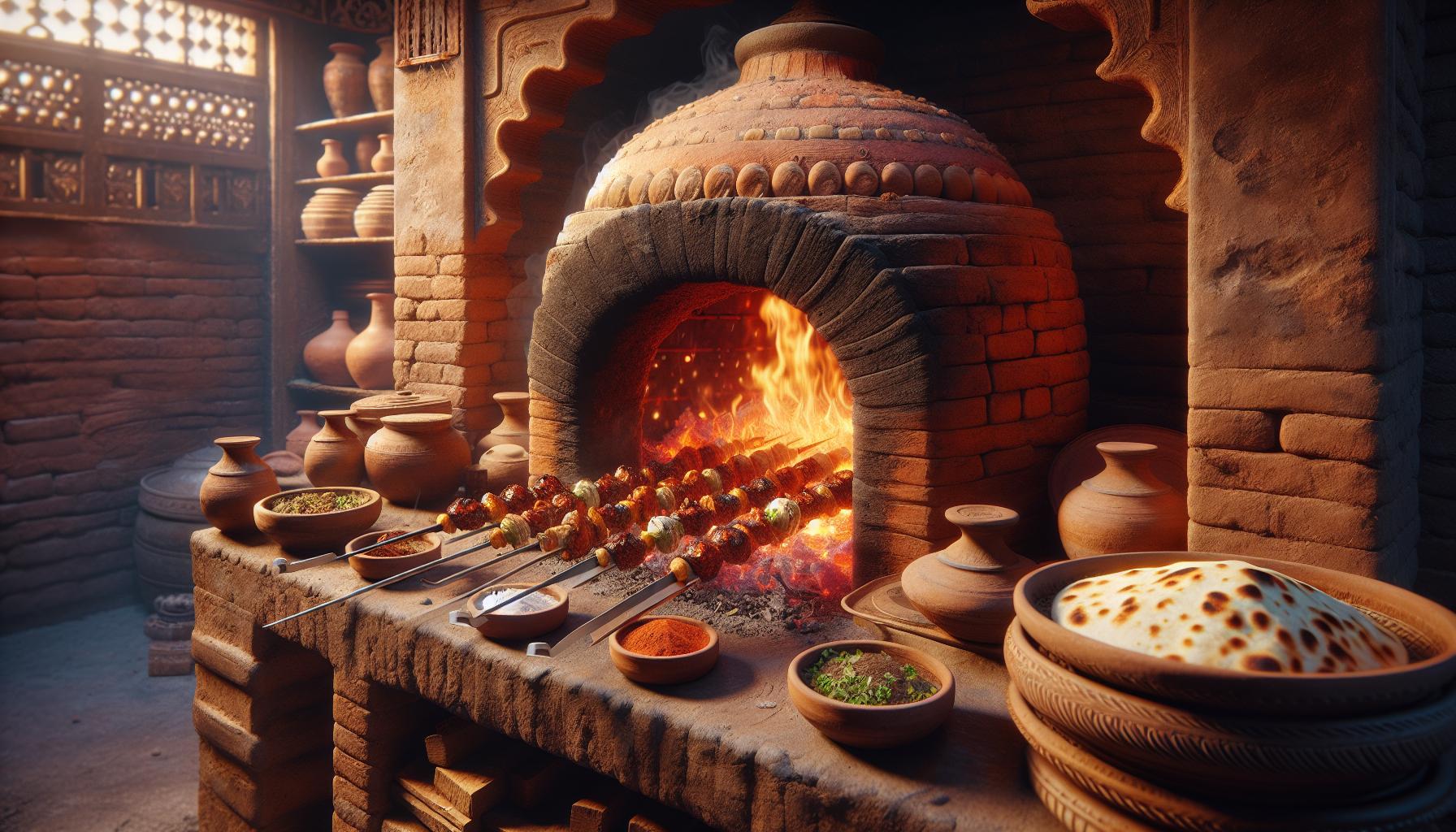Phone:
(701)814-6992
Physical address:
6296 Donnelly Plaza
Ratkeville, Bahamas.

Indian cuisine stands as a testament to centuries of culinary evolution where spices dance and flavors sing in perfect harmony. From the sizzling tarka to the slow-cooked dum style each technique transforms simple ingredients into extraordinary dishes that captivate taste buds worldwide.
Behind every aromatic curry and perfectly spiced biryani lies a treasure trove of time-tested cooking methods that have been passed down through generations. Whether it’s the art of tempering spices or the precise timing of adding ingredients these techniques aren’t just cooking steps – they’re the secret ingredients that make Indian food truly spectacular. For home cooks looking to master these methods it’s like unlocking a culinary superpower that’ll transform their kitchen into an Indian restaurant.
Indian cuisine relies on a precise combination of spices and ingredients that form the foundation of its distinct flavors. Each region across India uses specific spice combinations that create unique taste profiles in their traditional dishes.
Tempering spices unlocks their essential oils through careful heating in oil or ghee. The process begins with heating oil to the correct temperature (350-375°F) before adding whole spices in a specific order:
The tempering technique, known as tadka, transforms raw spices into aromatic flavor enhancers. Expert cooks recognize the right moment to add each spice by visual cues: cumin seeds turn a deep brown, mustard seeds pop or curry leaves become crisp.
Fresh spice blends deliver superior flavor compared to pre-made mixtures. Common Indian spice blends include:
| Spice Blend | Key Components | Regional Origin |
|---|---|---|
| Garam Masala | Cardamom, Cinnamon, Cloves | North India |
| Sambar Powder | Coriander, Red Chilies, Fenugreek | South India |
| Panch Phoron | Cumin, Fennel, Mustard, Nigella, Fenugreek | East India |
The preparation starts with dry roasting whole spices at low heat until fragrant (3-5 minutes). Grinding these roasted spices produces fresh masalas that maintain their potency for 3-4 months when stored in airtight containers away from light heat.

Traditional Indian cooking methods encompass time-tested techniques that create distinct flavors through specialized equipment and precise temperature control. These methods have evolved over thousands of years across different regions of India.
Clay pot cooking influences the depth of flavor in Indian dishes through natural heat distribution and moisture retention. Traditional clay pots, called matkas or handis, add mineral-rich earthiness to dishes like biryani, dal makhani or korma. Unglazed clay vessels allow food to breathe during cooking, creating concentrated flavors through evaporation. The porous nature of clay pots maintains optimal moisture levels, resulting in tender meats and perfectly cooked legumes. Clay cooking requires low heat for extended periods – lentils simmer for 6-8 hours while meat dishes cook for 4-5 hours.
Tandoor ovens reach temperatures of 900°F (480°C), creating distinct charred flavors in Indian cuisine. Foods cook vertically inside these cylindrical clay ovens, allowing fats to drip away from the intense heat source. Marinated meats like chicken tikka stay tender inside while developing a smoky crust. Flatbreads including naan stick directly to the tandoor walls, cooking in 60-90 seconds while developing signature blistered spots. The tandoor’s design enables simultaneous cooking of multiple items – skewered meats, breads and vegetables can cook together efficiently. Traditional tandoor cooking demands precise timing control to prevent overcooking in the intense heat.
Oil and ghee serve as essential cooking mediums in Indian cuisine, each playing distinct roles in flavor development and cooking techniques. Their proper use significantly impacts the final taste and texture of dishes.
Temperature control determines the success of Indian cooking techniques. A quick smoke test reveals optimal heating points: dropping a cumin seed in oil produces tiny bubbles at 350°F, indicating readiness for tempering spices. Different ingredients require specific temperature ranges:
| Ingredient Type | Temperature Range (°F) | Visual Indicator |
|---|---|---|
| Whole Spices | 325-350 | Gentle sizzle |
| Ground Spices | 300-325 | Light foam |
| Aromatics | 275-300 | Slow bubbling |
Maintaining steady heat prevents burning while extracting maximum flavor from ingredients. Adjusting flame intensity based on ingredient size ensures even cooking: smaller spices need lower heat than larger ones.
Ghee excels in high-temperature cooking applications where its high smoke point prevents burning. It’s ideal for:
Cooking oils complement specific regional dishes:
Temperature tolerance determines the choice between ghee and oil. Ghee maintains stability at 450°F while most cooking oils perform best below 400°F.
Indian gravy bases serve as the foundation for countless curry dishes across regional cuisines. These versatile bases incorporate specific ingredients cooked using time-tested techniques to create rich textures and complex flavors.
The onion-tomato base forms the backbone of North Indian curries through a precise cooking sequence. Starting with golden-brown onions caramelized for 15-20 minutes creates deep flavor compounds. Adding ginger-garlic paste follows, cooked until the raw aroma disappears in 2-3 minutes. Tomatoes join next, cooking down for 8-10 minutes until oils separate from the mixture. Mastering the timing transforms simple ingredients:
| Base Type | Cooking Time | Key Ingredients | Best For |
|---|---|---|---|
| Onion-Tomato | 25-30 mins | Onions, Tomatoes, Ginger-Garlic | Butter Chicken, Rogan Josh |
| Yogurt | 15-20 mins | Yogurt, Gram Flour, Cream | Korma, Shahi Dishes |
Indian cuisine features precise techniques for preparing rice and bread, with each method developed to achieve specific textures and flavors. These foundational skills transform basic ingredients into aromatic rice dishes and perfectly textured flatbreads.
Basmati rice preparation begins with a thorough rinsing process to remove excess starch until the water runs clear. Soaking the rice for 30 minutes allows the grains to absorb moisture evenly, resulting in longer separated grains after cooking. The optimal rice-to-water ratio is 1:1.5, with rice cooked uncovered until small holes appear on the surface. Reducing heat and covering the pot for 10 minutes creates fluffy rice with distinct grains. Traditional Indian cooks add aromatics like cardamom pods, bay leaves or cinnamon sticks to enhance flavor. A final 5-minute rest period allows moisture to distribute evenly throughout the rice.
Rolling perfect flatbreads requires a specific dough consistency achieved through proper kneading and resting. The dough incorporates whole wheat flour (atta), water at room temperature and a pinch of salt kneaded for 8-10 minutes until smooth. A 30-minute rest period allows gluten development for optimal texture. Rolling involves even pressure application using circular motions to create uniform 1/8-inch thickness. The tava (griddle) temperature reaches 400°F before cooking begins. Each flatbread cooks for 30 seconds on the first side then flips for direct flame contact, creating the characteristic brown spots and slight puff. Brushing with ghee adds flavor and prevents drying.
Indian cooking techniques vary significantly across regions, reflecting diverse cultural influences, local ingredients, and traditional methods passed down through generations. These variations create distinct flavor profiles and cooking styles unique to each area.
North Indian cuisine employs dry heat cooking methods centered around the tandoor clay oven. Chefs marinate meats in yogurt-based mixtures for 8-12 hours before cooking at temperatures reaching 900°F. The region’s signature dishes incorporate rich gravies made with onions, tomatoes, and cashews cooked in ghee. Wheat-based breads like naan, roti, and paratha dominate the cuisine, cooked on tava griddles or in tandoors. Dal preparation involves slow-cooking lentils with whole spices for 4-6 hours. The technique of bhunao (sautéing spices until oils separate) features prominently in creating deep, complex flavors.
South Indian cooking techniques emphasize steaming, fermenting, and tempering with curry leaves. Cooks ferment rice and lentil batters for 8-12 hours to create dosas, idlis, and uttapams. Coconut oil serves as the primary cooking medium, adding distinct flavor to dishes. The region’s signature tempering method involves heating mustard seeds, curry leaves, and dried red chilies in hot oil at 350°F. Steam cooking in banana leaves preserves nutrients while imparting subtle flavors. Grinding spices on traditional stone surfaces creates smooth, aromatic pastes for chutneys and sambars. Rice preparation involves precise washing techniques and specific water ratios (1:2.5) for optimal results.
Traditional Indian cooking techniques evolve with modern innovations, preserving authentic flavors while incorporating contemporary conveniences. These adaptations make Indian cuisine more accessible to home cooks without compromising taste authenticity.
Electric pressure cookers replicate the slow-cooking effects of traditional clay pots in 30-45 minutes. Multi-cookers execute perfect tadka with preset temperature controls for specific spices: 350°F for whole spices, 325°F for ground spices. Food processors create consistent ginger-garlic paste in 60 seconds compared to traditional mortar-pestle grinding. Air fryers produce crispy samosas at 375°F in 12 minutes using 80% less oil than deep frying. Stand mixers knead roti dough in 5 minutes, achieving the same texture as 15 minutes of hand kneading.
Store-bought spice blends match traditional flavors when toasted for 2 minutes before use. Pre-minced garlic pastes create authentic bases in combination with fresh ginger. Ready-made curry pastes transform into restaurant-style dishes with a 5-minute bhuna (dry frying) process. Frozen curry leaves retain 90% of their flavor when added directly to hot oil. Pre-cut vegetables maintain quality in airtight containers for 3 days, reducing prep time by 45 minutes per meal. Electric rice cookers produce perfect basmati rice in 20 minutes with a 1:1.5 rice-to-water ratio.
Indian cooking techniques represent a sophisticated blend of art and science that’s been perfected over thousands of years. From precise spice tempering to specialized cooking vessels these methods create the complex flavors that define authentic Indian cuisine. Modern cooks can embrace both traditional and contemporary approaches while maintaining the essence of Indian cooking.
Understanding these fundamental techniques opens up a world of culinary possibilities. Whether using a traditional clay pot or a modern electric pressure cooker mastering these methods empowers home cooks to create authentic Indian dishes with confidence. The key lies in respecting the traditional principles while adapting them to suit today’s kitchen needs.